Vitaliy Kinakh
Beyond Classification: Evaluating Diffusion Denoised Smoothing for Security-Utility Trade off
May 21, 2025Abstract:While foundation models demonstrate impressive performance across various tasks, they remain vulnerable to adversarial inputs. Current research explores various approaches to enhance model robustness, with Diffusion Denoised Smoothing emerging as a particularly promising technique. This method employs a pretrained diffusion model to preprocess inputs before model inference. Yet, its effectiveness remains largely unexplored beyond classification. We aim to address this gap by analyzing three datasets with four distinct downstream tasks under three different adversarial attack algorithms. Our findings reveal that while foundation models maintain resilience against conventional transformations, applying high-noise diffusion denoising to clean images without any distortions significantly degrades performance by as high as 57%. Low-noise diffusion settings preserve performance but fail to provide adequate protection across all attack types. Moreover, we introduce a novel attack strategy specifically targeting the diffusion process itself, capable of circumventing defenses in the low-noise regime. Our results suggest that the trade-off between adversarial robustness and performance remains a challenge to be addressed.
Enhancing Image Resolution of Solar Magnetograms: A Latent Diffusion Model Approach
Mar 31, 2025Abstract:The spatial properties of the solar magnetic field are crucial to decoding the physical processes in the solar interior and their interplanetary effects. However, observations from older instruments, such as the Michelson Doppler Imager (MDI), have limited spatial or temporal resolution, which hinders the ability to study small-scale solar features in detail. Super resolving these older datasets is essential for uniform analysis across different solar cycles, enabling better characterization of solar flares, active regions, and magnetic network dynamics. In this work, we introduce a novel diffusion model approach for Super-Resolution and we apply it to MDI magnetograms to match the higher-resolution capabilities of the Helioseismic and Magnetic Imager (HMI). By training a Latent Diffusion Model (LDM) with residuals on downscaled HMI data and fine-tuning it with paired MDI/HMI data, we can enhance the resolution of MDI observations from 2"/pixel to 0.5"/pixel. We evaluate the quality of the reconstructed images by means of classical metrics (e.g., PSNR, SSIM, FID and LPIPS) and we check if physical properties, such as the unsigned magnetic flux or the size of an active region, are preserved. We compare our model with different variations of LDM and Denoising Diffusion Probabilistic models (DDPMs), but also with two deterministic architectures already used in the past for performing the Super-Resolution task. Furthermore, we show with an analysis in the Fourier domain that the LDM with residuals can resolve features smaller than 2", and due to the probabilistic nature of the LDM, we can asses their reliability, in contrast with the deterministic models. Future studies aim to super-resolve the temporal scale of the solar MDI instrument so that we can also have a better overview of the dynamics of the old events.
Task-Agnostic Attacks Against Vision Foundation Models
Mar 05, 2025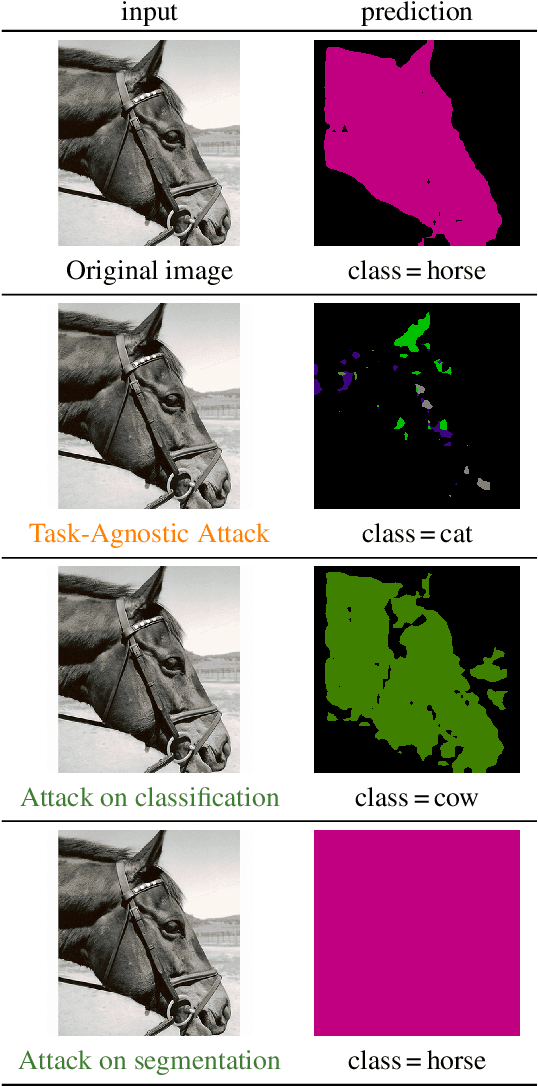
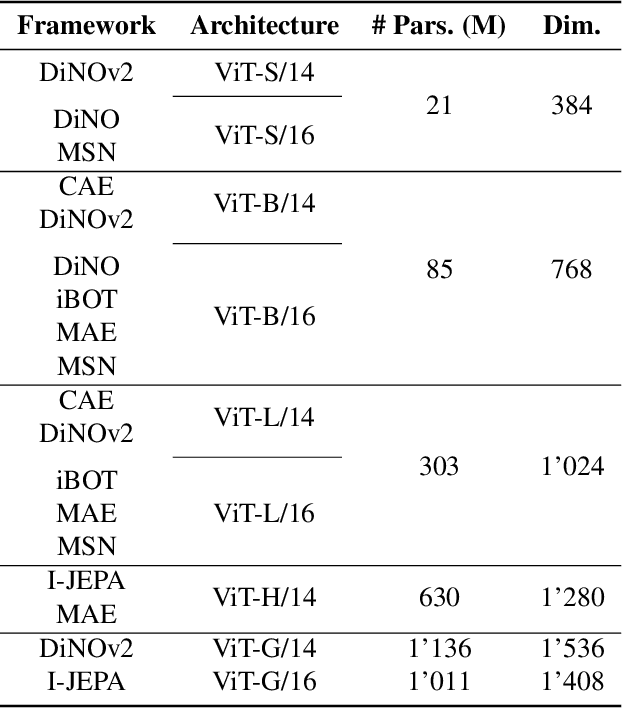
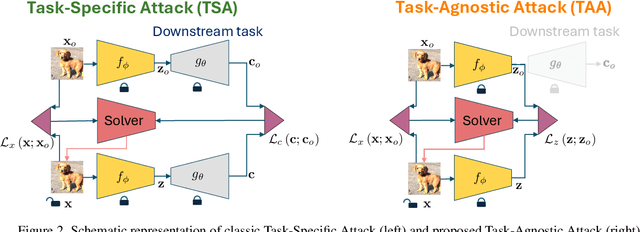
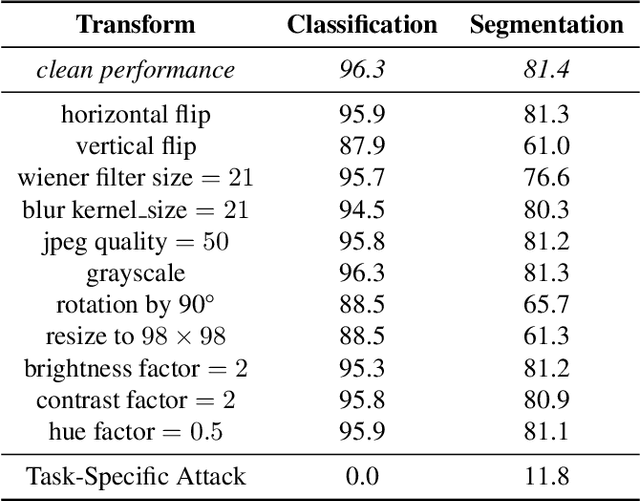
Abstract:The study of security in machine learning mainly focuses on downstream task-specific attacks, where the adversarial example is obtained by optimizing a loss function specific to the downstream task. At the same time, it has become standard practice for machine learning practitioners to adopt publicly available pre-trained vision foundation models, effectively sharing a common backbone architecture across a multitude of applications such as classification, segmentation, depth estimation, retrieval, question-answering and more. The study of attacks on such foundation models and their impact to multiple downstream tasks remains vastly unexplored. This work proposes a general framework that forges task-agnostic adversarial examples by maximally disrupting the feature representation obtained with foundation models. We extensively evaluate the security of the feature representations obtained by popular vision foundation models by measuring the impact of this attack on multiple downstream tasks and its transferability between models.
Binary Diffusion Probabilistic Model
Jan 23, 2025



Abstract:We introduce the Binary Diffusion Probabilistic Model (BDPM), a novel generative model optimized for binary data representations. While denoising diffusion probabilistic models (DDPMs) have demonstrated notable success in tasks like image synthesis and restoration, traditional DDPMs rely on continuous data representations and mean squared error (MSE) loss for training, applying Gaussian noise models that may not be optimal for discrete or binary data structures. BDPM addresses this by decomposing images into bitplanes and employing XOR-based noise transformations, with a denoising model trained using binary cross-entropy loss. This approach enables precise noise control and computationally efficient inference, significantly lowering computational costs and improving model convergence. When evaluated on image restoration tasks such as image super-resolution, inpainting, and blind image restoration, BDPM outperforms state-of-the-art methods on the FFHQ, CelebA, and CelebA-HQ datasets. Notably, BDPM requires fewer inference steps than traditional DDPM models to reach optimal results, showcasing enhanced inference efficiency.
Semi-Supervised Fine-Tuning of Vision Foundation Models with Content-Style Decomposition
Oct 02, 2024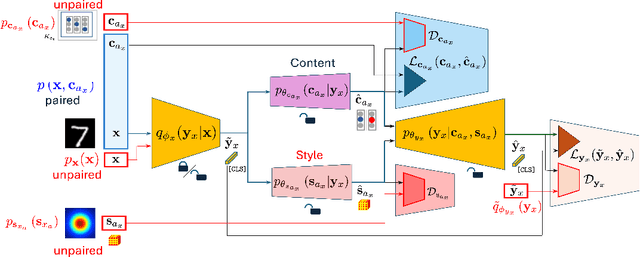

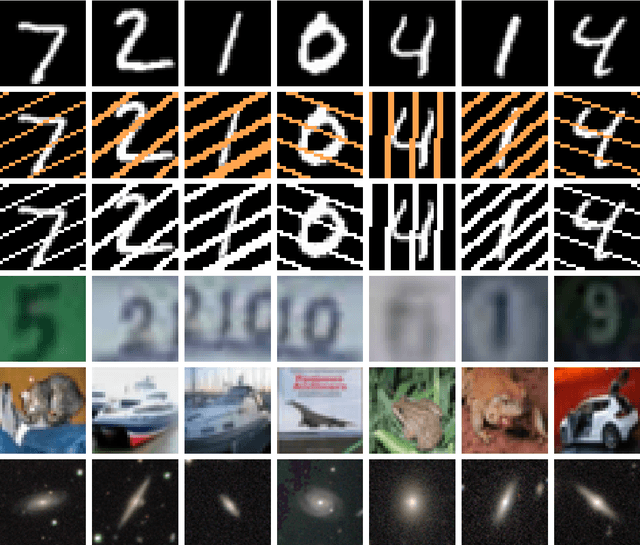

Abstract:In this paper, we present a semi-supervised fine-tuning approach designed to improve the performance of foundation models on downstream tasks with limited labeled data. By leveraging content-style decomposition within an information-theoretic framework, our method enhances the latent representations of pre-trained vision foundation models, aligning them more effectively with specific task objectives and addressing the problem of distribution shift. We evaluate our approach on multiple datasets, including MNIST, its augmented variations (with yellow and white stripes), CIFAR-10, SVHN, and GalaxyMNIST. The experiments show improvements over purely supervised baselines, particularly in low-labeled data regimes, across both frozen and trainable backbones for the majority of the tested datasets.
Evaluation of Security of ML-based Watermarking: Copy and Removal Attacks
Sep 26, 2024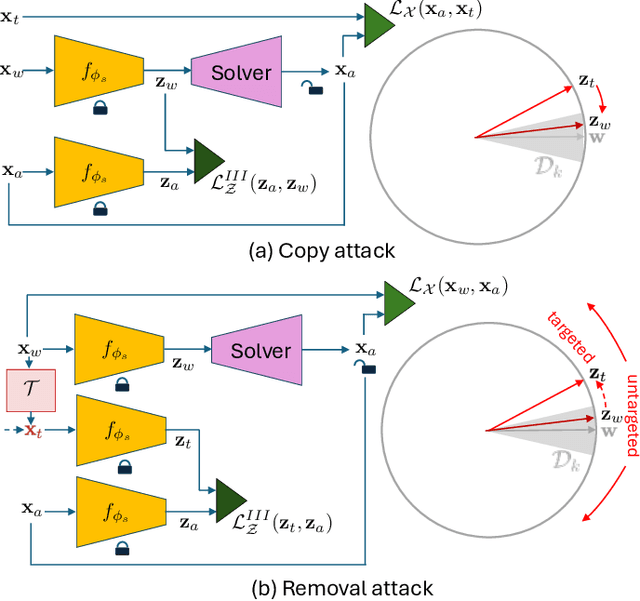
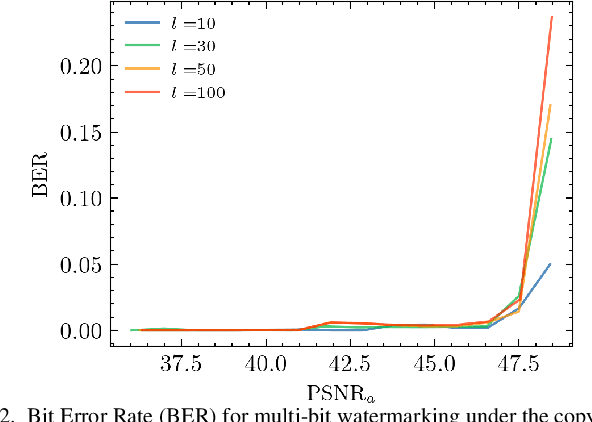
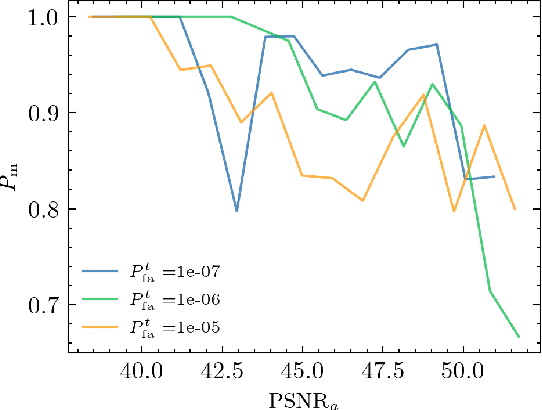
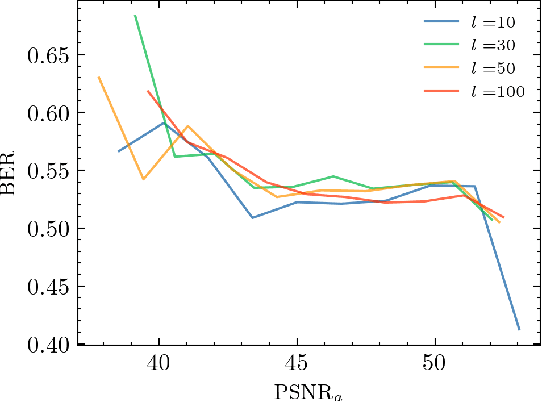
Abstract:The vast amounts of digital content captured from the real world or AI-generated media necessitate methods for copyright protection, traceability, or data provenance verification. Digital watermarking serves as a crucial approach to address these challenges. Its evolution spans three generations: handcrafted, autoencoder-based, and foundation model based methods. %Its evolution spans three generations: handcrafted methods, autoencoder-based schemes, and methods based on foundation models. While the robustness of these systems is well-documented, the security against adversarial attacks remains underexplored. This paper evaluates the security of foundation models' latent space digital watermarking systems that utilize adversarial embedding techniques. A series of experiments investigate the security dimensions under copy and removal attacks, providing empirical insights into these systems' vulnerabilities. All experimental codes and results are available at https://github.com/vkinakh/ssl-watermarking-attacks}{repository
Tabular Data Generation using Binary Diffusion
Sep 20, 2024Abstract:Generating synthetic tabular data is critical in machine learning, especially when real data is limited or sensitive. Traditional generative models often face challenges due to the unique characteristics of tabular data, such as mixed data types and varied distributions, and require complex preprocessing or large pretrained models. In this paper, we introduce a novel, lossless binary transformation method that converts any tabular data into fixed-size binary representations, and a corresponding new generative model called Binary Diffusion, specifically designed for binary data. Binary Diffusion leverages the simplicity of XOR operations for noise addition and removal and employs binary cross-entropy loss for training. Our approach eliminates the need for extensive preprocessing, complex noise parameter tuning, and pretraining on large datasets. We evaluate our model on several popular tabular benchmark datasets, demonstrating that Binary Diffusion outperforms existing state-of-the-art models on Travel, Adult Income, and Diabetes datasets while being significantly smaller in size.
Radio-astronomical Image Reconstruction with Conditional Denoising Diffusion Model
Feb 20, 2024Abstract:Reconstructing sky models from dirty radio images for accurate source localization and flux estimation is crucial for studying galaxy evolution at high redshift, especially in deep fields using instruments like the Atacama Large Millimetre Array (ALMA). With new projects like the Square Kilometre Array (SKA), there's a growing need for better source extraction methods. Current techniques, such as CLEAN and PyBDSF, often fail to detect faint sources, highlighting the need for more accurate methods. This study proposes using stochastic neural networks to rebuild sky models directly from dirty images. This method can pinpoint radio sources and measure their fluxes with related uncertainties, marking a potential improvement in radio source characterization. We tested this approach on 10164 images simulated with the CASA tool simalma, based on ALMA's Cycle 5.3 antenna setup. We applied conditional Denoising Diffusion Probabilistic Models (DDPMs) for sky models reconstruction, then used Photutils to determine source coordinates and fluxes, assessing the model's performance across different water vapor levels. Our method showed excellence in source localization, achieving more than 90% completeness at a signal-to-noise ratio (SNR) as low as 2. It also surpassed PyBDSF in flux estimation, accurately identifying fluxes for 96% of sources in the test set, a significant improvement over CLEAN+ PyBDSF's 57%. Conditional DDPMs is a powerful tool for image-to-image translation, yielding accurate and robust characterisation of radio sources, and outperforming existing methodologies. While this study underscores its significant potential for applications in radio astronomy, we also acknowledge certain limitations that accompany its usage, suggesting directions for further refinement and research.
TURBO: The Swiss Knife of Auto-Encoders
Nov 11, 2023



Abstract:We present a novel information-theoretic framework, termed as TURBO, designed to systematically analyse and generalise auto-encoding methods. We start by examining the principles of information bottleneck and bottleneck-based networks in the auto-encoding setting and identifying their inherent limitations, which become more prominent for data with multiple relevant, physics-related representations. The TURBO framework is then introduced, providing a comprehensive derivation of its core concept consisting of the maximisation of mutual information between various data representations expressed in two directions reflecting the information flows. We illustrate that numerous prevalent neural network models are encompassed within this framework. The paper underscores the insufficiency of the information bottleneck concept in elucidating all such models, thereby establishing TURBO as a preferable theoretical reference. The introduction of TURBO contributes to a richer understanding of data representation and the structure of neural network models, enabling more efficient and versatile applications.
Stochastic Digital Twin for Copy Detection Patterns
Sep 28, 2023



Abstract:Copy detection patterns (CDP) present an efficient technique for product protection against counterfeiting. However, the complexity of studying CDP production variability often results in time-consuming and costly procedures, limiting CDP scalability. Recent advancements in computer modelling, notably the concept of a "digital twin" for printing-imaging channels, allow for enhanced scalability and the optimization of authentication systems. Yet, the development of an accurate digital twin is far from trivial. This paper extends previous research which modelled a printing-imaging channel using a machine learning-based digital twin for CDP. This model, built upon an information-theoretic framework known as "Turbo", demonstrated superior performance over traditional generative models such as CycleGAN and pix2pix. However, the emerging field of Denoising Diffusion Probabilistic Models (DDPM) presents a potential advancement in generative models due to its ability to stochastically model the inherent randomness of the printing-imaging process, and its impressive performance in image-to-image translation tasks. This study aims at comparing the capabilities of the Turbo framework and DDPM on the same CDP datasets, with the goal of establishing the real-world benefits of DDPM models for digital twin applications in CDP security. Furthermore, the paper seeks to evaluate the generative potential of the studied models in the context of mobile phone data acquisition. Despite the increased complexity of DDPM methods when compared to traditional approaches, our study highlights their advantages and explores their potential for future applications.
 Add to Chrome
Add to Chrome Add to Firefox
Add to Firefox Add to Edge
Add to Edge